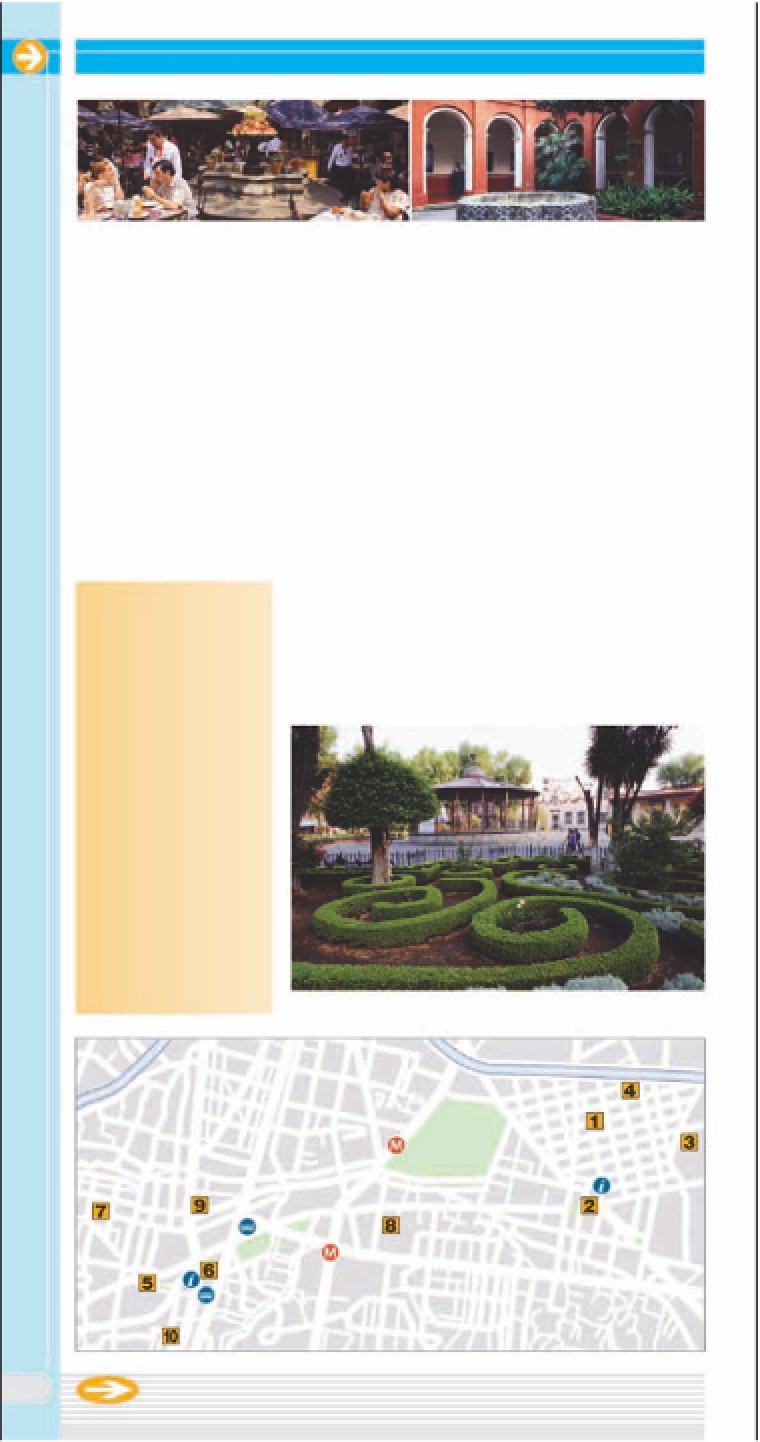Travel Reference
In-Depth Information
Left
El Bazar de Sábado Restaurant
Right
Museo del Carmen
Coyoacán and San Ángel
O
NCE SMALL COLONIAL TOWNS,
both
Coyoacán and San Ángel have
retained their charm although they are engulfed by the ever-expanding
Mexico City. Both are tranquil oases that offer glimpses of traditional Mexican
life, with green park-like plazas, cobblestone streets, flower gardens, and old
colonial mansions. In 1519, Cortés made Coyoacán his base during the siege
of Tenochtitlán. Dominican and Carmelite friars moved into San Ángel after
the Spanish conquest. In the 20th century the area's quiet beauty attracted
artists and celebrities including Diego Rivera, Frida Kahlo, and political
refugee León Trotsky. Visitors flock here to visit the
former homes and studios of these famous people
and savor the towns' artistic environment. They
shop for paintings and crafts, enjoy the sidewalk
cafés, boutique shops, and museums.
Sights
1
Museo Frida Kahlo
2
Plaza Hidalgo
3
Museo Nacional de las
Intervenciones
4
Museo León Trotsky
5
Bazar de Sábado
6
Ex-Convento e Iglesia
del Carmen
7
Museo Casa Estudio
Diego Rivera y Frida
Kahlo
8
Museo Nacional de la
Acuarela
9
Museo de Arte Carrillo
Gil
0
Museo Soumaya
Jardín del Centenario, Plaza Hidalgo
7JWFSPTEF
$PZPBDÈO
7JWFSPT
P
$
(1=8(/$
*5(
#OYOAC N
1FTFSP
/PSUF
$9)5$
$/
.JHVFM"OHFM
EF2VFWFEP
7
3AN
NGEL
1FTFSP
5FSNJOBM
P
NJMFT
LN
88
In the Náhuatl language Coyoacán means “Place of the Coyotes”











































